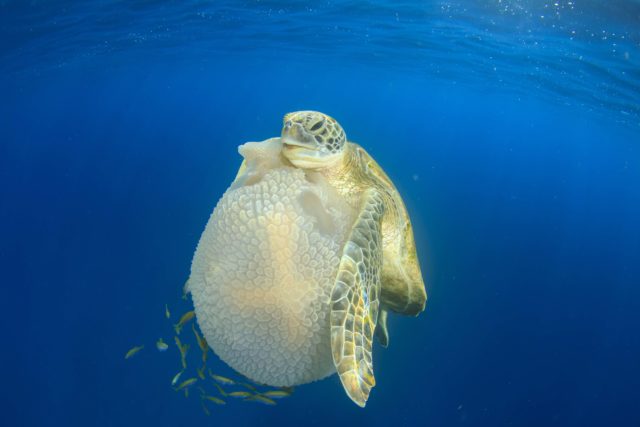No hands? No flipping problem for sea turtles
Turtles repurpose flippers to grasp, strike and corral prey.

Sea turtles are adept at using their flippers as hands despite the fact that the spade-like limbs only evolved for swimming, research has shown.
Scientists scouring photos and videos of marine turtles on the internet found surprising examples of flipper dexterity.

Different kinds of flipper use to manipulate prey were categorised as “holding”, “digging”, “striking”, “tossing”, “leveraging”, “swiping”, “corralling”, and “pounding”.
Similar behaviour has been observed in marine mammals with flipper-like limbs such as walruses, seals, manatees and sea otters. But the resourcefulness of the turtles was unexpected given the small size of their reptile brains.
Dr Kyle Van Houtan, science director at the Monterey Bay Aquarium in California, who co-led the research, said: “Sea turtles don’t have a developed frontal cortex, independent articulating digits or any social learning. And yet here we have them ‘licking their fingers’ just like a kid who does have all those tools.
“It shows an important aspect of evolution – that opportunities can shape adaptations.”
The findings, reported in the journal PeerJ, provide insights into the evolution of four-limbed sea creatures and raise questions about “nature or nurture” – which traits are learned and which are hard-wired from birth.
Dr Van Houtan added: “We expect these things to happen with a highly intelligent, adaptive social animal. With sea turtles, it’s different. They never meet their parents; they’re never trained to forage by their mom.
“It’s amazing that they’re figuring out how to do this without any apprenticing, and with flippers that aren’t well adapted for these tasks.”





